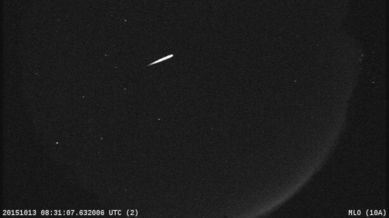Orionid Meteor Shower 2025 peaks next week: Date, time, and how to watch
Are you ready for a chance to spot a "shooting star" before dawn over the next week?

The Orionid meteor shower, which peaks around the third week of October, is caused by debris from the famous Halley’s Comet. These meteors are bits of the comet that have been left behind in space as Earth passes through them.
The peak of the Orionids will occur on October 21, making it an excellent time for stargazers. The shower will be visible during the prime predawn hours, with no interference from the moon.
The name “Orionid” comes from the radiant point where the meteors appear to radiate from in the sky, located just above the second-brightest star in Orion—Betelgeuse. Although Orion is a winter constellation, it appears in early autumn and won’t rise above the eastern horizon until after 11.00 pm local daylight time. It will be highest in the sky, towards the south-southeast, between 4 and 5 am.
One of the unique aspects of the Orionids is that they are visible in both the Northern and Southern Hemispheres, making them one of the few meteor showers that can be seen globally.
The Orionids are part of a long-running cosmic story, originating from debris left by Halley’s Comet. In fact, the Orionid meteor shower is essentially the same as the Eta Aquarids, as Earth crosses through the same stream of meteoroids twice in its orbit—once on each side of the sun.
Orionid meteors are typically fast-moving, traveling at speeds of 66 kilometers (41 miles) per second. They are often faint and can be hard to see from urban areas. For the best viewing experience, find a dark, rural location away from city lights.
The shower consists of several sub-showers with different peaks, stretching out over several days, adding a little extra time for you to catch the action.